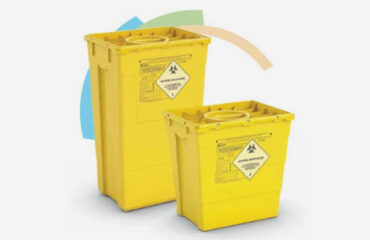The Ultimate Guide To Reclaim Waste
The Ultimate Guide To Reclaim Waste
Blog Article
A Biased View of Reclaim Waste
Table of ContentsThe Main Principles Of Reclaim Waste Reclaim Waste for DummiesThe Single Strategy To Use For Reclaim WasteTop Guidelines Of Reclaim WasteExcitement About Reclaim Waste
Check out the types, occurrences, and types of liquid waste. Residential sewer waste refers to the waste and items from a household septic storage tank. This kind of waste is developed by people in residences, schools, and various other buildings. This only includes sewage-disposal tanks that have a drainpipe area. The correct administration and disposal of residential sewer waste call for fluid waste to be transferred to a sewer treatment plant where the proper methods and tools are applied to purify and dispose of waste.
Industrial waste often consists of potential dangers, such as combustible products or a mix of fluid and strong waste items, and requires a much more innovative and detailed disposal procedure. The disposal of industrial waste typically entails the filtering of waste before transport to guarantee safe and appropriate disposal. Hazardous waste is created from by-products and runoff of commercial processes and production.
This sort of waste can not utilize the exact same sewage monitoring transport or procedures as septic or business fluids. The hazardous waste management procedure needs the inspection and screening of liquid waste before it undergoes the disposal procedure (industrial wastewater treatment). Runoff waste is the liquid waste that comes from runoff and excess stormwater in highly populated areas or cities
Runoff waste can cause contamination and flooding if not taken care of correctly. Find out more about sewage system cleansing and waste monitoring. Making certain appropriate waste monitoring can stop disasters and lower ecological injury. Both individuals in residential setups and professionals in industrial or manufacturing markets can gain from recognizing the processes and policies of fluid waste monitoring.
What Does Reclaim Waste Do?
Call PROS Services today to learn regarding our waste monitoring and disposal solutions and the correct methods to look after the liquid waste you create.
(https://www.openstreetmap.org/user/reclaimwaste1)Do you recognize what occurs to your water when you draw the plug, purge the toilet or drain pipes the washing equipment? No? Well, it deserves recognizing. This so-called 'wastewater' is not only a vital source but, after therapy, will certainly be released to our land, rivers or the sea. Utilized water from commodes, showers, bathrooms, kitchen area sinks, laundries and industrial procedures is called wastewater.

water used to cool down equipment or tidy plant and devices). Stormwater, redirected here a form of wastewater, is overflow that moves from farming and city areas such as roofings, parks, yards, roads, courses and rain gutters right into stormwater drains pipes, after rain. Stormwater streams neglected directly to regional creeks or rivers, at some point getting to the sea.
Not known Facts About Reclaim Waste
In Queensland, the majority of wastewater is treated at sewer therapy plants. Wastewater is transported from residential or industrial sites with a system of sewers and pump terminals, known as sewage reticulation, to a sewer treatment plant. Neighborhood federal governments build, keep and run most sewer therapy plants. Operators are licensed under the Environmental Protection Act 1994 to discharge treated wastewater at an acceptable ecological requirement right into rivers.
The Division of Natural Resources advises city governments regarding handling, operating and maintaining sewage systems and treatment plants. In unsewered areas, city governments might need owners to mount individual or family sewer treatment systems to treat residential wastewater from toilets, cooking areas, shower rooms and washings. The Department of Natural Resources authorises making use of family systems when they are confirmed to be efficient.
Many stormwater obtains no treatment. In some brand-new communities, treatment of some stormwater to remove litter, sand and crushed rock has started making use of gross toxin catches. Wastewater treatment takes place in 4 stages: Eliminates strong matter. Bigger solids, such as plastics and other items wrongly discharged to sewage systems, are removed when wastewater is passed via screens.
Wastewater then moves right into large containers where solids resolve and are eliminated as sludge. Grease and scum are skimmed from the surface area. Uses tiny living microorganisms called micro-organisms to break down and get rid of remaining dissolved wastes and great bits. Micro-organisms and wastes are included in the sludge. Eliminates nitrogen and phosphorus nutrients that could create algal blossoms in our waterways and threaten aquatic life.
Things about Reclaim Waste
Nutrient elimination is not available in any way sewage treatment plants due to the fact that it needs expensive specialist devices. It is coming to be a lot more usual in Queensland. Clear liquid effluent generated after therapy may still include disease-causing micro-organisms. If this effluent is released into waterways such as rivers or the sea, the micro-organisms will at some point pass away out.

Many wastewater moves right into the sewage system. Under the Act, neighborhood governments provide approvals and permits for eco appropriate activities (Ages) entailing wastewater releases that could have a neighborhood influence.
The Of Reclaim Waste
Surveillance supplies accurate info about water quality and can validate that permit problems are being fulfilled. The info gotten through monitoring supplies the basis for making water quality decisions.
Report this page